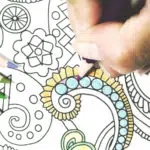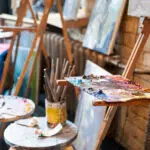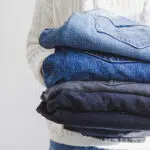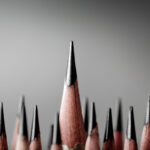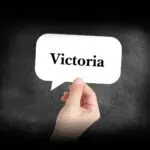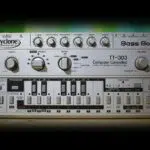National Pencil Day is on March 30 and it is the perfect moment to explore these old writing tools. This simple instrument has meant so much to mankind. It allows people to express themselves, helps them find their creativity, and supports all kinds of scribbles and doodles. Did you know that one pencil can write up to 45,000 words? Pencils have been used for ages, and have gone through many changes in terms of their design, but have you ever wondered who came up with the brilliant idea of attaching an eraser to a pencil? Well, Hymen Lipman was the man behind this great discovery and was responsible for making our lives easier. We celebrate this day to honor this superb creation.
History of National Pencil Day
Who would have thought that a graphite core closed inside a wooden casing could perform such numerous and extremely important tasks?
Before the invention of the pencil as we know it, people still wrote, only, they used things like a fine brush of camel hair or the stylus (ancient Romans). Back in the 1st century B.C., the Greek poet Philip of Thessaloníki wrote about ‘leaden writing instruments’.
Pencils are one of the first writing tools and they are known to have originated in the 16th century when the world discovered graphite. This crystallized form of carbon was found somewhere around 1565 or even earlier, near Keswick, England. Legend says a storm uprooted a tree here, and clinging to the tree roots was a shiny black substance — graphite! There is no evidence that this is how graphite was discovered; what we do know is that this site was transformed into a commercial graphite mine a few decades later. This is around the time people began using a piece of graphite wrapped in a string to write.
18th-century German chemist A. G. Werner was responsible for naming it ‘graphite’, from the Greek word ‘graphein,’ which means ‘to write’. In the early days after the discovery, local shepherds were the only ones using graphite to mark their sheep. Because it looked so much like lead, people would call it plumbago — the Latin word for lead, i.e., ‘plumbus’ — or even ‘black lead’. This connotation stuck to graphite, and consequently, pencils too.
After Swiss naturalist Conrad Gessner published his drawing of a strip of graphite inside a tube of wood, the ‘pencil’ began to spread throughout Europe. Britain still had a monopoly over pencil making, and graphite, at this time. By 1794, however, France was cut off from this supply of pencils due to their war with Britain. Thus, French engineer Nicolas-Jacques Conté was responsible for inventing ‘Crayons Conté’, which was low-quality graphite mixed with clay, shaped into rods, and baked. Continental pencil makers no longer needed to rely on the British for pencils.
Conté’s invention spurred more innovation in the world of pencil making. Germany, France, America — each country conducted their own experiments, and pencil making became commonplace around the globe. These pencils were great, but the wood around was not. In fact, it was often of low quality. Soon, people hit upon the idea of painting pencils to mask the quality of the wood. Only the fanciest pencils went unpainted. And then, at the 1889 World’s Fair in Paris, an Austro-Hungarian pencil company unveiled a new luxury pencil — which was painted yellow. It was named Koh-I-Noor after the largest and best diamond in the world. Because of this, yellow came to be associated with quality, and many other pencil makers picked up this color to adorn their pencils. Even today, the U.S. paints pencils and other writing instruments yellow to represent quality.
And what about, the mistakes people made while writing? Before there were erasers, people would rub out mistakes using balled-up lumps of old bread. Then, in 1770, a clergyman-chemist named Joseph Priestley noticed the gum harvested from trees in South America was very good at removing pencil marks. Because people had to rub to remove the marks, this gum was named ‘rubber’.
Germany gave birth to the mass-production of pencils, with companies like Faber-Castell, Staedtler, and Lyra that produced pencils in bulk. In Massachusetts, the Dixon Ticonderoga Company began manufacturing pencils in the 19th century. By the late 19th century, pencils were widely being used in the U.S. The most famously used wood for pencils was red cedar because of its aroma and quality.
On March 30, 1858, Hymen Lipman patented the ‘modern pencil.’ It was a wooden graphite pencil with a rubber eraser attached, which he later sold to Joseph Reckendorfer for $100,000.
Since then, the manufacturing of pencils hasn’t stopped and there are billions of pencils being made and sold around the world. There are so many types of pencils including graphite pencils, charcoal pencils, grease pencils, and watercolor pencils.
National Pencil Day timeline
A large reserve of graphite is discovered in England, which is extremely solid and can be carved into sticks.
An Italian couple creates pencils that look almost like modern wood-encased carpentry pencils.
A new form of pencils is created using graphite, sulfur, and antimony in Germany.
Pencil manufacturer William Munroe creates wood pencils from the popular Eastern Red Cedar trees in Tennessee; his designs inspire other southern manufacturers and are used by other industries too.
Henry David Thoreau and his father substitute clay for wax, and the graphite creates very readable text; this pencil becomes standard in classrooms across the U.S.
Hymen Lipman receives his first patent for attaching an eraser to a pencil.
Pencil maker Eberhard Faber builds the first American mass-production pencil factory, The E. Faber Pencil Company, in Midtown Manhattan, New York City.
In the digital age, we go back to using a writing instrument from the Roman ages — the stylus — which erases mistakes, blends colors, and does so much more on Apple devices around the globe.
Pencils and Famous People
Thomas Edison’s special pencils
These were made by the Eagle Pencil company and were thicker than standard pencils, around three inches long, and had softer graphite than normal.
Vladimir Nabokov’s writing habits
The author of greats like “Lolita and Pale Fire” would rewrite everything he had written, several times, in pencil.
John Steinbeck’s “East of Eden”
John Steinbeck’s “East of Eden” reportedly took more than 300 pencils to write; Steinbeck was also said to be an obsessive pencil user, writing many of his masterpieces in pencil.
Roald Dahl’s pencils
Roald Dahl used exactly six sharpened pencils with yellow casings from the beginning of the day; only once all six became unusable would he resharpen them.
Johnny Carson’s set
On “The Tonight Show,” Carson would often play with pencils while sitting at the desk; to avoid on-set accidents, these pencils were specially made with erasers at both ends.
National Pencil Day FAQs
Who invented the modern pencil?
The modern pencils were created by Nicholas-Jaques Conte in 1795.
What was used before pencils?
A Roman writing instrument called a stylus was used to write before pencils were made. This instrument left a mark that was light but could be seen on the papyrus easily.
Did pencils always have lead?
This is a common misconception. Lead has actually never been used in lead pencils but, in fact, graphite.
Why is there a National Pencil Day?
National Pencil Day commemorates the day pencil maker Hymen Lipman received a patent for the ‘modern pencil,’ a wood pencil with an eraser attached. The day itself has been observed since the 1970s, but the founder has not been … found.
How do you celebrate National Pencil Day?
There are multiple ways to celebrate this day, including celebrating the pencil itself, reading up on the instrument’s origins, and so on.
When was the pencil invented?
A scientist serving in Napoleon Bonaparte’s army, Jacques Conté, invented the first pencil design in 1795, using graphite.
National Pencil Day Activities
Draw a picture without picking up your pencil
This fun activity is for all artists and non-artists. Draw a picture without picking up your pencil from the paper. You can even draw a picture without looking at the paper. Have fun using this instrument to express yourself.
Find another use for the pencil
Small plants usually need some support while growing. If you have a small plant at home, you can give it some support by tying a pencil to it. It can also be used to create a DIY school picture frame or as a moth repellent (putting pencil shavings into cloth bags and storing them as satchels in your closet can repel moths.) Find new uses for the humble pencil, then go forth and innovate!
Create your own customized pencils
Get your own customized pencils with your name on them or any funny phrase written on them. There are many ways in which you can get them made. Search the internet for the best customized pencil supplier in your area.
5 Interesting Facts About Pencils
Pencils are long-lasting
One pencil can draw a line measuring up to 45 miles.
They can be used in unusual circumstances
Pencils can write underwater and in zero gravity too.
They’re in high demand
Almost 14 billion pencils are produced in a year.
Color indicates quality
Pencils in the U.S are painted yellow to indicate the best quality pencils.
The name has French roots
The term ‘pencil’ is taken from the French word ‘pincel.’
Why We Love National Pencil Day
We celebrate the first writing tool
Every child starts their literacy journey with a pencil. Using pencils helps us learn advanced motor skills, develops our creativity, and allows us to write and draw, non-permanently. Pencils are used by everyone, from toddlers to artists — everyone needs a pencil. National Pencil Day is a great day to honor this essential tool that assists us in many of our writing tasks, explore the history of pencils, and educate ourselves about how and where these writing tools are made.
We love what the pencil symbolizes
Life is full of possibilities, and the pencil (with an eraser attached) gives you a chance to start over.
They're more planet-friendly
They are made of wood, not any plastic material. They don't even require accessories, and they come with an eraser attached. Plus, they can write for a long long time — approximately 45,000 words.
National Pencil Day dates
| Year | Date | Day |
|---|---|---|
| 2026 | March 30 | Monday |
| 2027 | March 30 | Tuesday |
| 2028 | March 30 | Thursday |
| 2029 | March 30 | Friday |
| 2030 | March 30 | Saturday |


